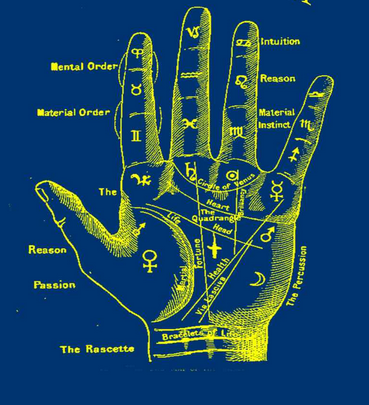Blog Archives
Book 4, Sutra 3: Patanjali’s Yoga Sutras
“Like a farmer removing obstacles, nature progresses, and not just by simple cause and effect.”
nimittam aprayojakam prakrtínám varana bhedas tu tatah kshetrikavat
In this sutra Patanjali elaborates on the “parinamah prakriti,” or transformations in nature. In the last sutra he mentioned an “overflowing” that happens and most commentaries follow the older Vyasa and others in building upon that. They explain the reference to a farmer in this sutra to indicate a farmer’s use of dykes and irrigation ditches to water the plants in a field. The farmer simply breaks the walls in order to allow the water to flow into any given field. Similarly, they say, transformations in nature happen by eliminating obstacles to any particular development happening.
Earlier on in sutra i.24, Patanjali discussed the “kleshas” which are the obstacles to progress in yoga. So this sutra seems to support his earlier recommendation that we develop as yogis principally by eliminating the obstacles that exist in the form of certain behaviors and attitudes. This implies that the real “gold” of yoga, the direct knowledge of the separation between the seer and the seen, will dawn on us naturally just by removing the obstacles to that knowledge. It is as if that knowledge is already there, somewhere within us, right now and we just have to clean the many windows that exist between it and our eyes. When the windows are clear we can see that inner knowledge and claim it as our own.
This sutra, however, may contain more than this point about clearing away obstacles. “Nimittam aprayojakam,” or “cause and effect does not initiate,” seems extraneous if this sutra is just about the farmer’s methods. This phrase makes this sutra more complicated, more profound. It seems to me that Patanjali is criticizing the idea that things happen in nature because of “causation;” that is, something ignites because sufficient heat has been applied, for example. We wouldn’t normally say that an object is naturally on fire and applying heat to it just clears the obstacles to that fire appearing. But Patanjali seems to make the point here that some type of choice is instrumental to anything happening. A farmer directs the flow of water by removing obstacles and it seems that the removal of the obstacle is what causes water to flow but Patanjali states that there is more to causation than that. Water somehow flows principally through the farmer’s intention and not exclusively through the “natural cause” of the breakdown of the impeding dyke.
This may seem an overly subtle and insignificant point but if we connect it to Patanjali’s emphasis on the development of superpowers then it is not. Superpowers are today denied by modern science due to the lack of sufficient cause. Nature, itself, does not seem to have the ability to cause the improbable superpowers from expressing in any one of us. But in this sutra, Patanjali teaches that superpowers are possible due to the power that choice and intention has in the natural flow of nature. We can fly through the air, for example, not because there is an actual cause for that but because nature contains that as a possibility once we remove the obstacle to it through choice and intention. This is contrary to the way that modern science trains us to see things and therefore hard to believe and accept but regardless, this seems to be part of Patanjali’s teachings.
A few commentators take this point about the limitation to cause and effect too far in my opinion. They use this sutra to attack our ability to apply willpower and effort in order to achieve success in yoga. Satyananda Saraswati writes, “no sadhana or spiritual practice can have a direct effect, sadhanas remove obstacles [only].” Nambiar writes “efforts to improve are useless . . . there is a natural flow in evolution. No effort will change it.” Condron writes “practices and methods are not the true cause [of yoga progress].” These statements go too far minimizing the power of effort to bring results in yoga. In this sutra it is the farmer’s choice AND efforts that initiate the water to flow in certain directions. Patanjali is just making sure that we value the power of the famer’s intention or choice in the matter but he’s not discounting the role that effort plays. This is supported in sutras i.20-22 where he so clearly states that progress in yoga is directly tied to the amount of effort we apply over a prolonged period. The power of choice is supported by sutra i.39 and its emphasis on the choice we make about the object of our meditation. This discussion about causes in the development of yoga continues in the next sutra as well.
There is another way of reading this sutra that does not follow the lead of Vyasa and the early commentators in their use of the water dykes analogy. The earlier sutra mentions an “overflowing” of nature causing transformations. Perhaps it is more appropriate to envision a farmer irrigating his field by allowing one to overflow into another instead of breaking through dykes within ditches. In India, where rice is a more staple crop it is a common practice to plant crops on terraced earth fields, one just above the other on the side of a hill or mountain. The farmer then simply allows rainwater coming down the mountain side to fill the first field. When that first field is full it overflows and fills the next field, and so on. That analogy could apply to the 8 limbs of yoga in that an aspirant perfects the first limb, which overflows into the next limb, allowing a succession of practices to reach maturity.
Book 2, Sutra 47: Patanjali’s Yoga Sutras

“Asana is perfected
when there is no more effort
and the mind is absorbed into the Infinite.”
The second of the three sutras on asana, there is contention and disagreement around this one just as there was with the last. The sutra contains 4 Sanskrit words, “prayatna saithilya ananta samapattibhyam.” The individual words are translated differently and their interplay is also disagreed upon. I have chosen to side with the 4th century commentator, Vyasa’s, interpretation which many authors do. Vyasa proposed that the Sanskrit word, “ananta,” means “infinite” in this sutra. Without Vyasa’s lead, however, many translators admit that the meaning of this word would be unknown to them.
Some of the confusion comes from the fact that “ananta” is the name of a cosmic serpent within Hindu mythology. The snake provides a seat for the god, Vishnu, to recline on. So, technically, “ananta” is a seat for a god and “asana” literally means “seat.” But commentators disagree as to what it means to be absorbed “,samapatti,” into “ananta.” Does it mean to focus on a Divine Serpent, literally, as Taimni insists, linking its power to that of a gyroscope, steadying the asana. As Bryant notes, Patanjali is considered a reincarnation of that snake, itself.
Some commentators believe that “ananta” is a reference to the kundalini serpent power that is said to reside in the central spinal column (SatyaSaraswati). Some back away from any reference to the snake and feel that “ananta” is “the infinite breath of life” (Stiles), “a steady object” (Sadhakas), “the infinite, the universal I AM” (BrahmanandaSaraswati), “endless unity” (Chapple), a phrase that means “steady like the rock of Gibraltar” (Satchidananda).
Regardless, it seems clear that Patanjali is connecting control of the body with control of the mind in this sutra. As Satchidananda writes for this sutra: “Through the body we can put a brake upon the mind.”
Another area of confusion surrounds “prayatna saithilya.” Authors disagree whether it means that asana takes continues unending effort or if all effort is to be release. Condron translates it as “persistent effort,” and Ranganathan states that “continuous effort and endless relaxation [together] are the twin attainments of asana.” Most writers however feel that Patanjali is telling us to let go of effort in the perfection of asana. Iyengar makes the point that a tremendous amount of effort must be first applied in order to reach that state.
Hartranft has a unique take on the Sanskrit, “samapatti,” of this sutra which ties it back to Patanjali’s prior use of the term in sutra i.41. He states that asana is a cognitive blending “revealing that the body and the universe are indivisible.” This might be a good way for explaining in detail what others describe only as “meditation on the infinite.”
(post photo credit: watercolor by kilaya ciriello, ©2004).
Book 1, Sutra 38: Patanjali’s Yoga Sutra
“OR THE MIND CAN BE STEADIED
BY FOCUSING ON KNOWLEDGE OR EXPERIENCE GAINED
WHILE SLEEPING.”
Patanjali listed the obstacles that can create distraction in the mind of the yogic practitioner in sutras 30-31. In sutra 32 he recommended that we apply a single antidote to any obstacle that might arise. Sutras 33-39 list examples of such antidote practices.
Translators and commentators differ on exactly what Patanjali is referring to here. He doesn’t give us a lot of instructions on how to use this tool to steady the mind. The assumption must be that a competent teacher would provide the details.
Brahmananda Saraswati suggests that this is “self-analysis through dream analysis and analysis of deep sleep.” Vishnudevananda says “Many times the Truth is revealed by the superconscious during sleep. . . . if that knowledge is meditated on consciously, great progress can be made upon the path.” Satyananda Saraswati says “The mind can be controlled by developing the method of conscious dreaming and conscious sleeping. . . . There is a method of seeing dreams consciously, but it is dangerous and only a few can practice it. . . . It is meant only for people who are psychic.”
Nambiar combines this sutra with the last one: “Meditate on the dream experience of a holy personality or a divine symbol to stabilize the mind.” Shearer says that it’s about “witnessing the processing of dreaming or dreamless sleep.”
Vijnanabhiksu interprets this sutra as indicating the value of meditating on dreams in general. He explains that through this meditation one can realize that the waking state is a type of dream as well. Through that realization, dispassion arises and the mind and emotions are quieted.
Book 1, Sutra 35: Patanjali’s Yoga Sutra

“OR ANOTHER WAY TO STEADY THE MIND
(AND AVOID BEING SWEPT UNDER BY THE OBSTACLES)
IS TO DEVELOP CONCENTRATION OF THE SUBTLER SENSE PERCEPTIONS.”
Patanjali listed the obstacles that can create distraction in the mind of the yogic practitioner in sutras 30-31. In sutra 32 he recommended that we apply a single antidote to any obstacle that might arise. Sutras 33-39 list examples of such antidote practices.
This sutra lists an advanced technique that involves capturing some sensorial image or experience within the mind itself and then focusing exclusively on it in order to bring stability of mind through detachment from the external world. In Sanskrit this is called “pravrtti” and will be the focus of the sutras in book 3, sutra 25 forward. In various translations for this sutra this technique has been called “higher objective perception,” “higher sense activity,” “sensuous immediate cognition,” “extraordinary sense perceptions,” and “mystical sense perception.”
Iyengar says that “One may equally attain an exalted state of consciousness by becoming totally engrossed, with dedication and devotion, in an object of interest.” I would qualify this somewhat to make it clear that such an object is being experienced entirely internally despite the fact that it still may be a sensual experience.
Book 1, Sutra 32: Patanjali’s Yoga Sutra

“THE YOGI CAN AVOID OR QUELL THESE PROBLEMATIC STATES
BY STEADILY APPLYING ONE ANTIDOTE
WHEN THE OBSTACLE ARISES.”
The previous sutra mentioned the 4 problematic states of pain, mental and emotional unease, physical trembling, unconscious breathing and excited breathing that result from distractions occurring within yoga.
This sutra is also translated in many different ways because of Patanjali’s use of the phrase “eka tattva” which means single object or single truth or single principle. Many translators incorrectly assume that Patanjali is giving the instructions for how to overcome the problematic states in this sutra alone. “Eka tattva” is not the name for some profound but vague special practice nor does it refer to a specialized focus on the Absolute “I AM” consciousness. These translations miss the fact that Patanjali gives the specific instructions in the following sutras and in this one, only prepares us with the idea that for each obstacle we should apply “one single truth/principle/practice” in order to overcome it. In other words, when we encounter an obstacle we should focus and intensify our practice in one particular way.
The meaning of this sutra is clear for me because I am aware of a very similar teaching of the Buddha’s. Here is another sutra of Patanjali’s that mirrors the Buddha’s teachings closely. A central practice within the buddha dharma is the application of antidotes to the “afflictions” that a meditator may encounter. Each affliction has a specific antidote. The following sutras will list techniques for overcoming obstacles or, in other words, for purifying our minds. In this way, these yoga sutras become very practical and methodical.
Book 1, Sutra 13: Patanjali’s Yoga Sutra

“ABHYASA IS AN UNRELENTING DETERMINATION EXPRESSED IN MAXIMUM EFFORT IN ORDER TO REACH STABILITY IN A STATE FREE OF MENTAL FLUCTUATIONS.”
Patanjali further describes the first part of his two part formula (abhyasa and vairagya) here. Essentially he tells us in this sutra that, in order to reach the state free of the vrttis (mental fluctuations), we must apply ourselves without thoughts of defeat, failure or ever giving up, over whatever period of time the task requires. We must try and try again, over and over, slowly uprooting the tree of mental agitation. It is a big tree, so we must be prepared for a long and strenuous battle. Further on in his sutra, Patanjali will give us his recommended techniques, strategies and practices for this battle. But for now, he is warning us that a sustained and serious effort is required.
It is the nature of the ego to want shortcuts in life and unfortunately, it is the nature of the ego to offer those shortcuts to others. Patanjali is telling us, however, that the very idea of shortcuts prevents us from developing one of the two essential qualities that we need in order to reach the goal: unrelenting persistence of effort. To believe in shortcuts undermines our ability to maintain a prolonged struggle, our ability to weather innumerable momentary defeats and failures. Patanjali tells us that it is more important that we persist than we are successful. In fact, as he will tell us in his definition of vairagya, success is actually something we have to renounce on the yogic path but sustained effort cannot be given up until we reach the goal.
Satyananda Saraswathi says “Abhyasa means continued practice, you can not leave it at all. It becomes a part of your personality, a part of your individual nature.” He uses the word “sadhana” and connects it with abhyasa. Sadhana is the word commonly used to indicate a particular set of exercises meant for spiritual progression. So abhyasa is an executed dedication to some type of sadhana. The important difference between Patanjali’s and others’ use of abhyasa and sadhana is that it is here connected with stilling the mind. The yoga that Patanjali describes cannot be separated from stilling the mind and in this verse he tells us that we can only achieve this with repeated, prolonged effort.
In the Bhagavad Gita Krishna teaches essentially the same thing about the necessity of repeated effort. In Chapter 6, Sutra 35:
“The Blessed Lord said:
No doubt, you are right, O mighty Arjuna, that the mind is hard to control, wavering and restless, but by repeated effort and dispassion it can be done.”








